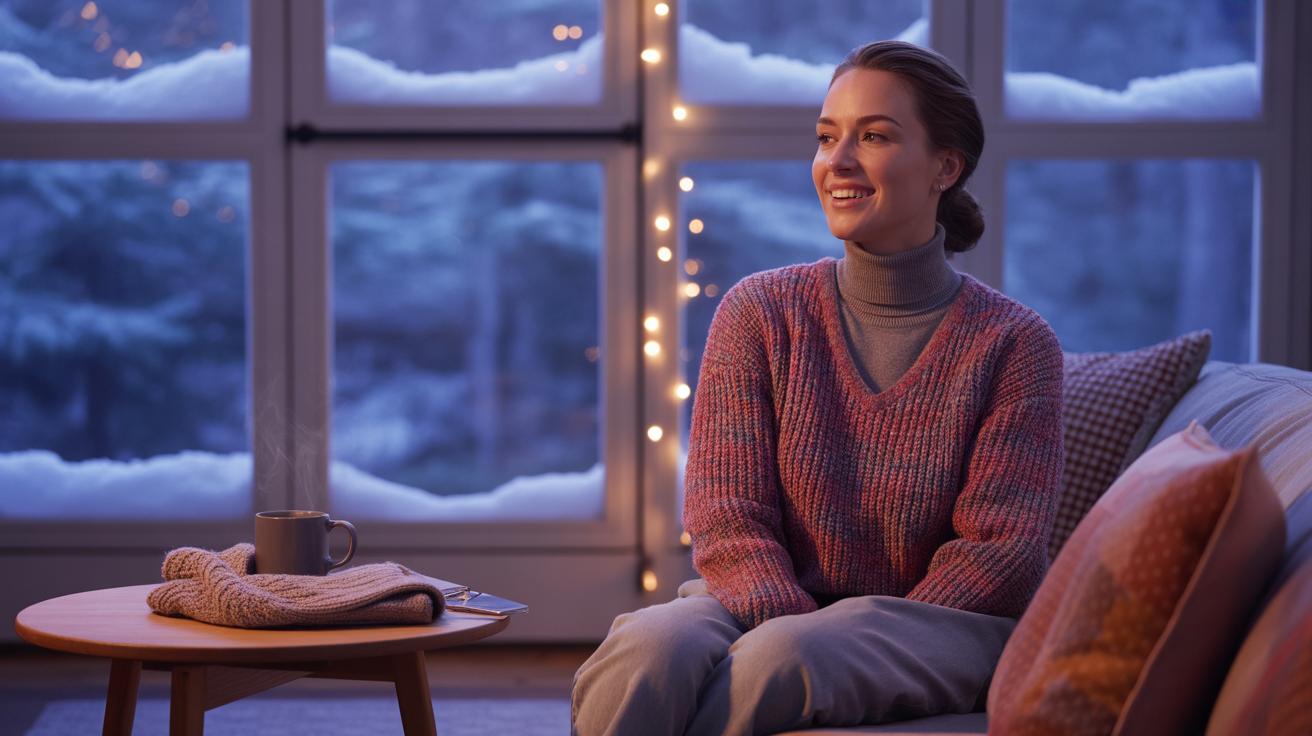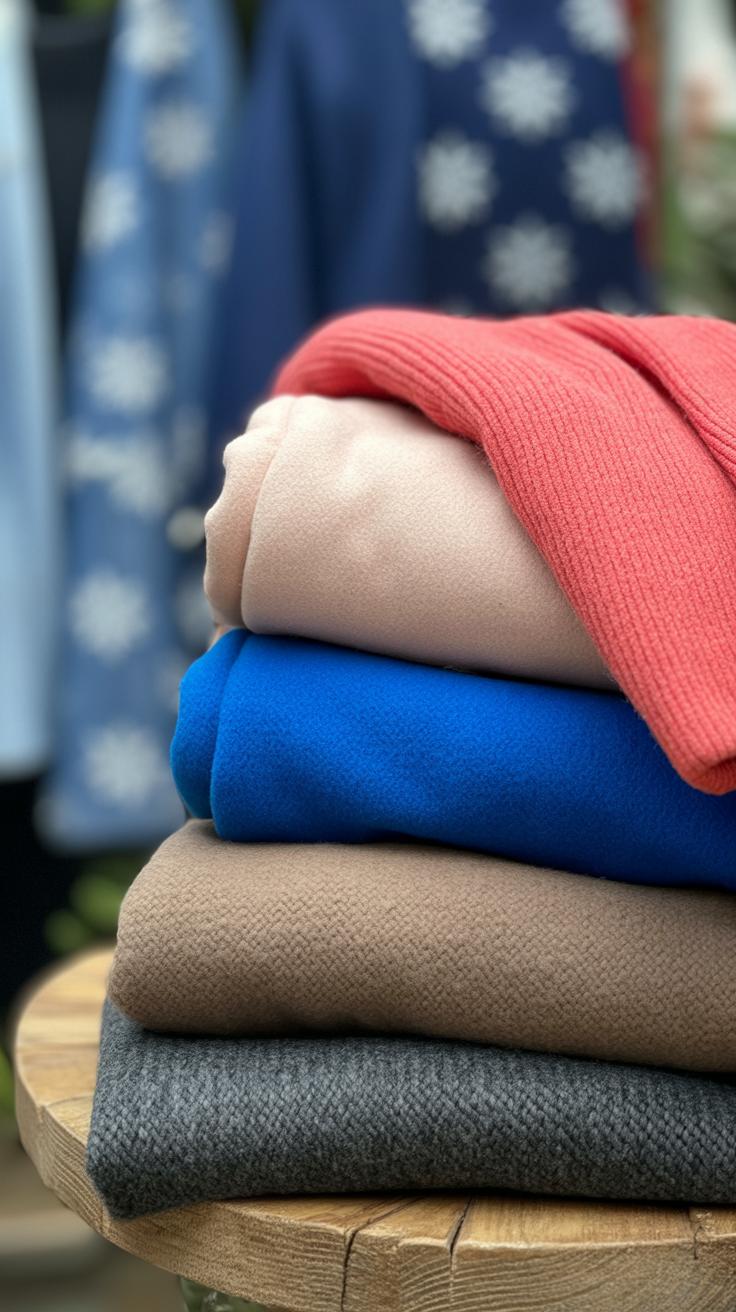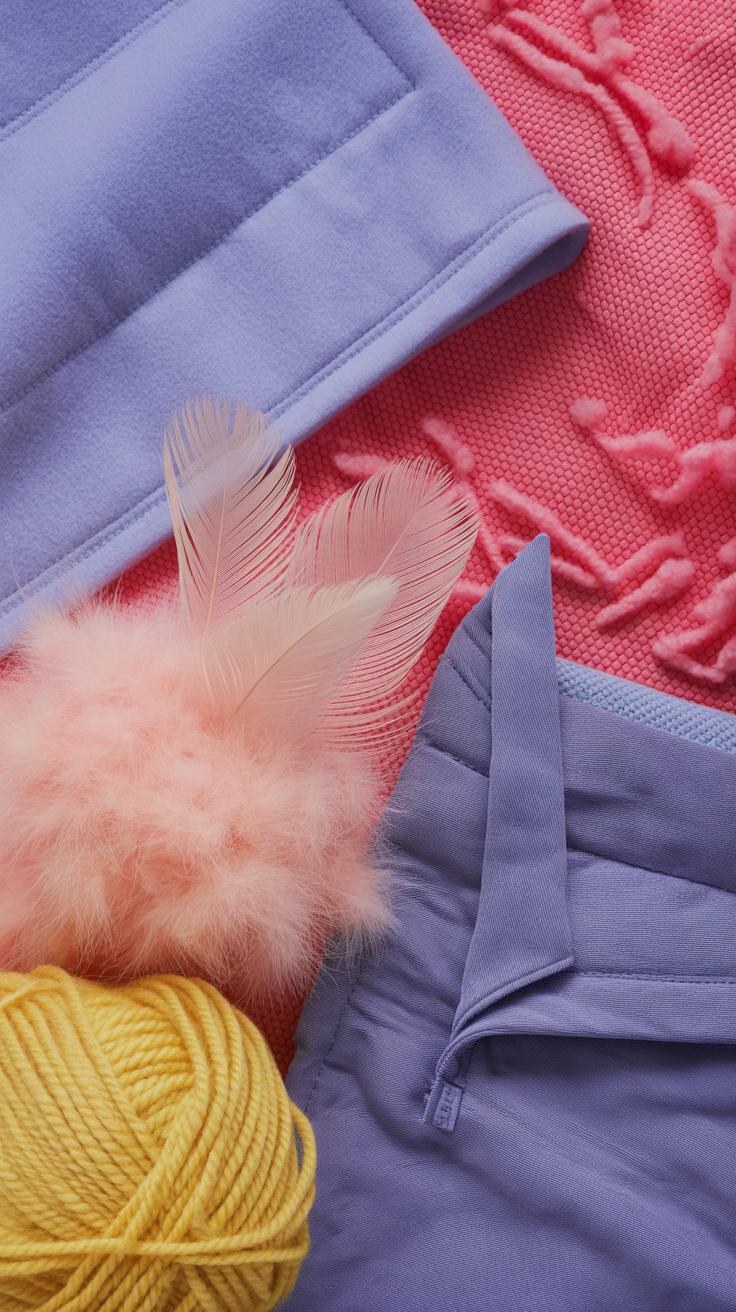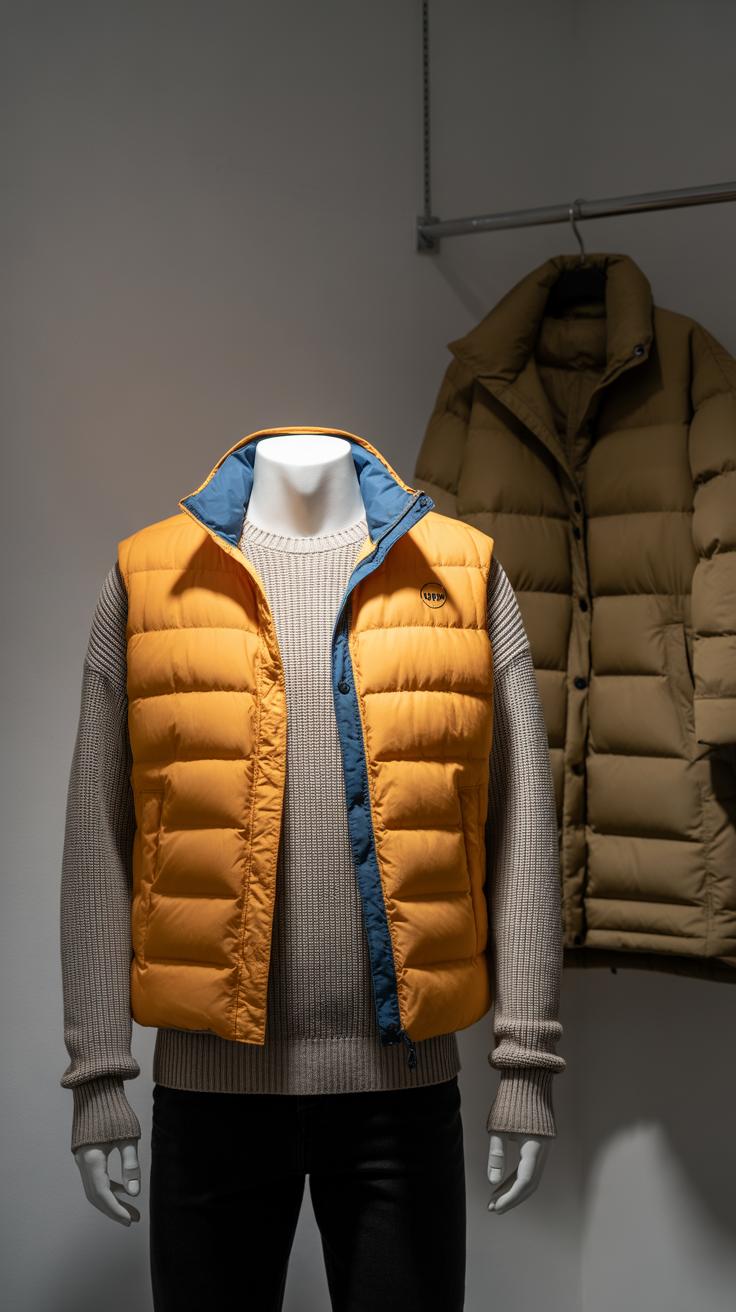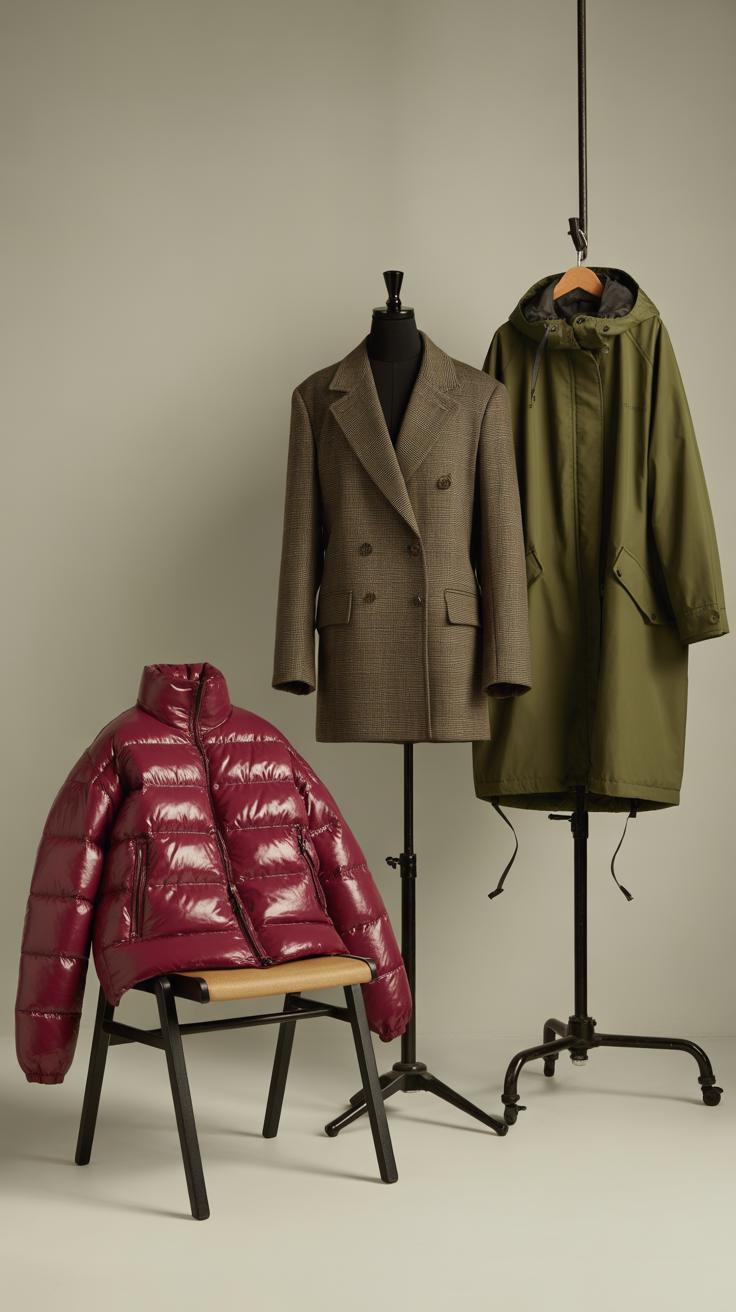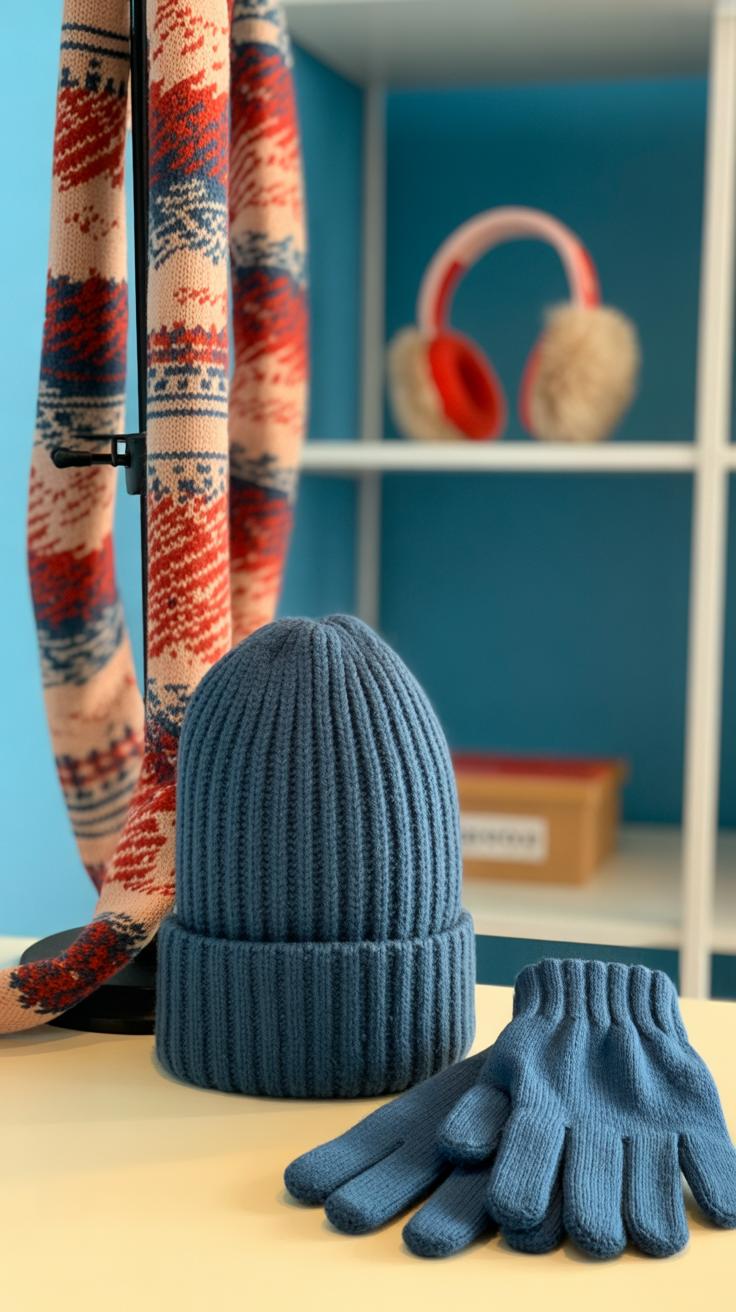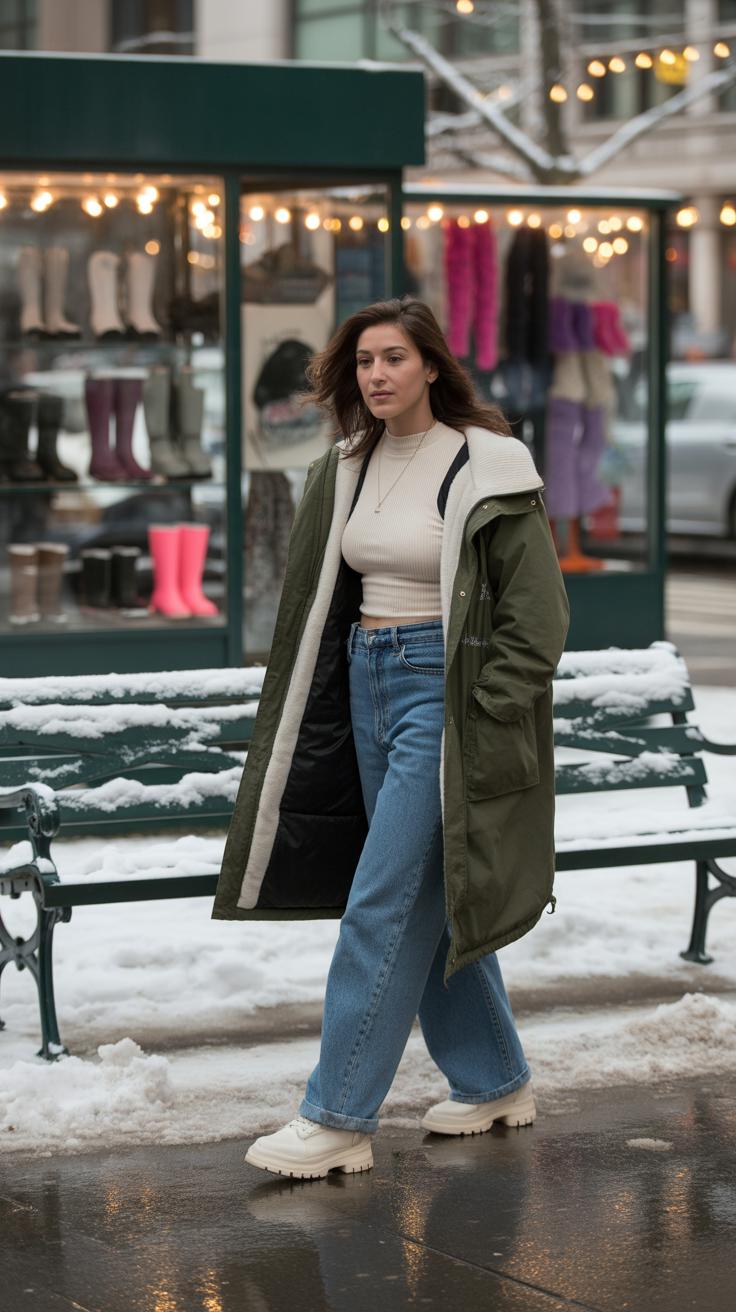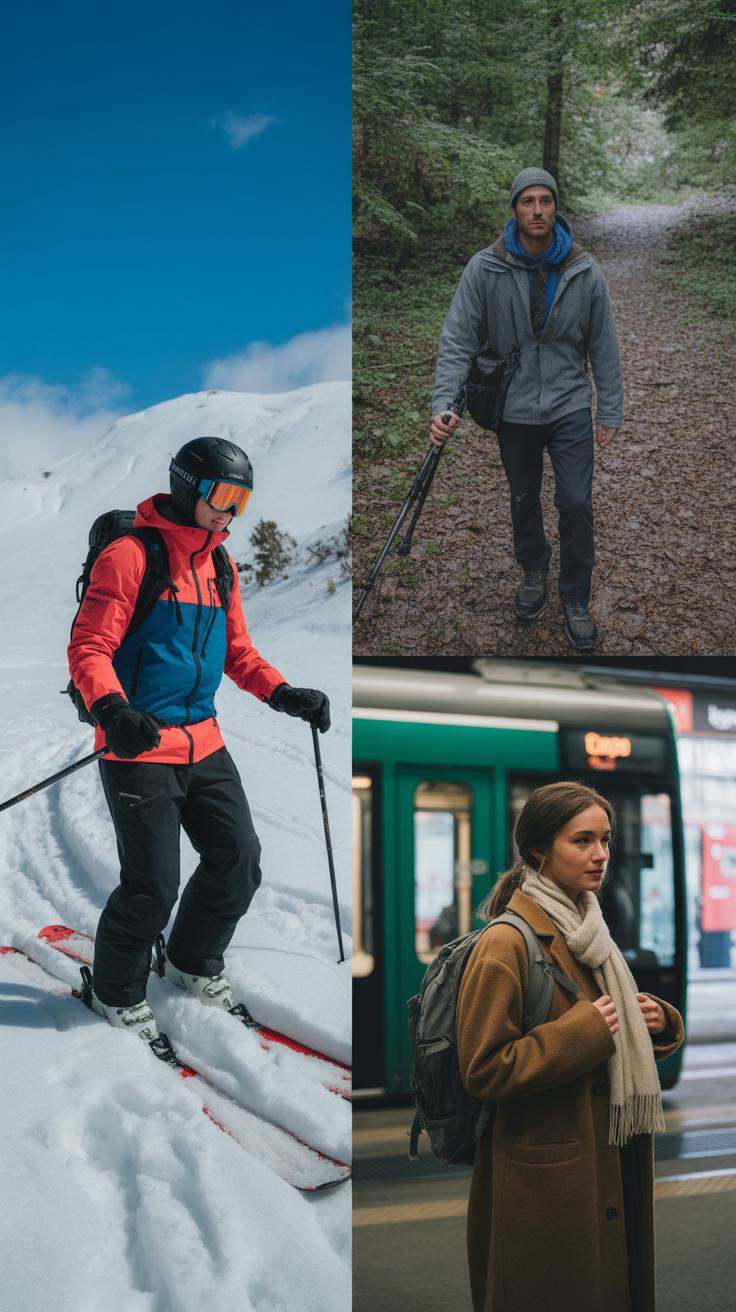Introduction
Winter brings cold weather that requires the right clothing to stay comfortable. Choosing the right outfits can protect you against low temperatures and make chilly evenings enjoyable. This article focuses on winter outfits and layering ideas that help you keep warm without sacrificing style. You will find practical advice on how to select clothing made from effective materials and how to combine layers to maximize warmth and comfort.
Understanding winter clothing basics helps you prepare for cold days. Layers provide insulation and create barriers against wind and moisture. From outerwear like coats and jackets to inner layers such as thermal underwear, each piece plays a role. This guide covers a variety of winter clothing options and layering techniques that can help you build your ideal winter wardrobe. You will also discover tips for choosing the right accessories to complete your look and stay cozy.
Fundamentals of Winter Clothing
Winter clothing exists to shield your body from cold weather. It helps trap body heat and stops chilly air from reaching your skin. These clothes form a barrier that keeps warmth inside while blocking cold and dampness outside.
Winter outerwear includes coats and jackets designed specifically for cold conditions. They usually have insulation to hold heat and materials that resist wind and water. Inside, wearing thermal underwear warms you up by providing a layer close to your skin that keeps heat from escaping.
Water resistance matters because wet clothes lose their ability to insulate. Insulated layers add thickness to slow heat loss and maintain your body temperature. When you combine water resistance with good insulation, you stay warm and dry in cold, wet conditions. Have you checked if your winter clothes are both warm and water-resistant?
Purpose and Protection
Winter clothing protects your body from low temperatures by acting as a shield against cold air, wind, and moisture. Your skin doesn’t lose heat as fast when you wear clothes that trap warm air close to your body.
Wind can take heat away quickly, so jackets and coats that block wind stop your body heat from escaping. Moisture, like snow or rain, cools your body when it soaks through your clothing. Wearing water-resistant layers keeps you dry and warm.
Think about how layering creates pockets of air that serve as insulation. Each layer controls the flow of heat and moisture, keeping you comfortable in chilly evenings. What strategies do you use to protect yourself on cold, windy days?
Types of Winter Clothes
You need different winter clothing pieces to stay warm and comfortable. Coats and jackets provide outer protection against wind and wet weather. Puffy insulated jackets trap heat, while wool coats add warmth and breathability.
Thermal underwear fits directly on your skin, giving you extra warmth without bulk. Gloves protect your hands from frostbite, and hats keep heat from escaping through your head. Scarves shield your neck and can cover your face against cold gusts.
Each piece has a role. Without gloves, your fingers get cold fast. Without a hat, you lose much body heat. Have you thought about how every item in your winter outfit works together to keep you warm?
Materials That Keep You Warm
Choosing the right materials makes a big difference in how warm you stay on chilly evenings. Winter clothing often uses a mix of natural and synthetic fabrics to block cold air and trap heat close to your body. Wool and down come from natural sources and offer excellent insulation by capturing tiny pockets of air that hold warmth.
Synthetic materials like polyester and Thinsulate mimic this effect by using special fibers designed to trap heat while staying lightweight. Some fabrics also protect you from wind and rain. These are made with waterproof coatings or membranes that prevent water from soaking in but still let moisture escape. This keeps you dry and comfortable if you face snow or light rain.
Using clothes made of these materials helps you stay warm without feeling bulky or overheated. How often do you check the fabric tags in your winter gear? Knowing what your clothes are made of helps you pick the best options for warmth and protection.
Thermal Insulation Materials
Thermal insulation materials keep your body heat close to you by using trapped air. Down feathers are a popular natural option because their fine structure creates many air pockets. These pockets reduce heat loss and make down jackets very warm yet light.
Thinsulate is a synthetic alternative used in gloves, hats, and jackets. It uses thin fibers to trap more heat in a smaller space, keeping you warm without adding bulk. Polyester fibers also play a big role in insulation, often found in mid-layer sweaters and jackets. They hold warm air and dry quickly.
Which insulation material suits your needs depends on your activity and weather conditions. Would you prefer lightweight warmth or heavy-duty protection? Matching the right insulation to your winter routine helps you stay comfortable and prepared.
Waterproof and Windproof Fabrics
To stay warm, your outer layer needs to block wind and water while letting sweat evaporate. Fabrics like expanded polyethylene serve this purpose well. This material creates a barrier that stops cold wind and rain but allows your body’s moisture to escape.
Other shell materials commonly used in winter jackets include Gore-Tex and similar breathable membranes. These fabrics have tiny pores that block water droplets but let water vapor pass through. This keeps you dry outside and prevents overheating inside.
Choosing a jacket with good waterproof and windproof fabric is key if you spend time outdoors in uncertain weather. Do you check how breathable your outerwear is? Balancing protection and breathability helps maintain comfort during long chilly evenings.
Layering Principles for Winter
Layering helps you stay warm by trapping heat and letting moisture escape. It works by combining different clothing pieces, each with a clear job. This approach keeps you comfortable, even when temperatures drop.
Your base layer sits closest to your skin. Its job is to pull sweat away so your skin stays dry. Moisture on your skin cools you down and leads to discomfort. The mid layer holds heat next. It acts like a blanket, trapping your body warmth.
The outer layer shields you from wind, rain, and snow. This layer stops cold air and moisture from getting in. When you wear the right layers, you control temperature better and avoid overheating or freezing.
Have you thought about how often you adjust your layers during the day? Being ready to add or remove a layer makes your outdoor time more comfortable. What layers do you find best for your usual winter plans?
Base Layer
Your base layer keeps skin dry by wicking sweat away. Staying dry helps your body keep warm. Natural wool works great because it moves moisture and resists odors. Merino wool feels soft and is less itchy than regular wool.
Synthetic fabrics like polyester blends also move moisture efficiently. Many athletes wear these because they stay light and dry fast. Choose a base layer that fits snugly but lets you move easily.
What base layer feels best on your skin? Have you noticed how different materials affect how warm or dry you feel? Trying various fabrics can help you find the right match for chilly evenings.
Mid and Outer Layers
The mid layer acts like insulation. It traps the warm air your base layer keeps dry. Common mid layers include fleece, down, or synthetic fill. Fleece works well for active days because it breathes and dries fast.
Down or synthetic insulated jackets offer more warmth for very cold conditions. These hold heat but still allow moisture to pass through to prevent sweat buildup.
The outer layer guards against wind, rain, and snow. Waterproof or windproof materials like Gore-Tex keep elements out while letting moisture escape. A well-fitting outer layer should let you move freely and cover your other layers completely.
Think about your daily winter activities. Can your mid and outer layers handle sudden weather changes? Preparing with the right pieces helps you stay warm and dry without weighing you down.
Choosing the Right Outerwear
Your winter coat or jacket often forms the foundation of your cold-weather outfit. Selecting the right outerwear means thinking about fit, material, and smart features that protect you from harsh conditions while allowing easy movement. A well-fitted coat should feel snug but not tight, letting you layer underneath without feeling cramped. Too loose, and cold air can sneak in; too tight, and you’ll limit your comfort during a busy evening out.
Materials play a key role in keeping you warm. Natural wool offers strong insulation but can be heavy and sometimes itchy. Synthetic fabrics like polyester and nylon often resist wind and water better, which is essential when temperatures drop. Look for coats with insulation layered inside that traps heat but still breathes. Does your coat let you move effortlessly while staying warm during a brisk walk?
Attention to closures and hoods can make a big difference. A coat with a full zipper covered by a storm flap stops chilly wind better than just a zipper alone. Adjustable hoods shield your head and neck, especially when weather turns unpredictable. Extra pockets let you store gloves, phone, or snacks securely. Think about your routine: do you need an outer layer built for quick runs outside or long walks in the cold? Choosing outerwear with these qualities will help you face chilly evenings both comfortably and stylishly.
Material and Fit
Your choice of materials directly influences how warm you stay during winter outings. Wool and down are dense and trap heat well, making them ideal in freezing temperatures. Synthetic fills often handle moisture better, which can keep you dry if snow or rain is in the forecast. Avoid cotton as an outer layer, since it absorbs moisture and lowers your body temperature.
Fit impacts both warmth and comfort. A jacket that fits well traps heat close to your body but allows you to move freely. Make sure you can wear a sweater underneath without feeling restricted. Sleeves should cover your wrists fully to prevent cold air from entering. A slightly longer coat protects more of your legs when you walk outside. How comfortable do you feel during normal movement like reaching for your bag or buttoning your jacket?
Key Features
Look for outerwear details designed to improve warmth and convenience. Adjustable hoods offer protection against wind and rain, and some come with removable fur lining for added heat when you need it. Windproof zippers prevent cold drafts and make a noticeable difference when temperatures plunge.
Extra pockets mean you can keep your hands warm or store essentials without carrying a bag. Inside pockets secure phones, wallets, or gloves safely. Some jackets include wrist cuffs with thumb holes that seal out cold air. Think about features that suit your daily needs. Would you prefer a jacket that easily converts from casual to dressy? Consider these little touches as you pick out your perfect winter coat.
Accessories That Enhance Warmth
Covering your extremities helps keep your whole body warmer on chilly nights. Your hands, feet, head, and neck lose heat quickly because blood vessels run close to the skin. When these areas stay warm, your body holds onto heat more efficiently.
Accessories like hats, scarves, gloves, and socks act as barriers against cold air. They trap your body heat and block wind. Without these items, heat escapes, and you feel colder, no matter how heavy your coat is.
Think about the last time your fingers or toes felt numb outside. Did you realize how uncomfortable your body became? Wearing the right accessories can prevent that discomfort and help you enjoy winter activities longer.
Choosing suitable winter accessories isn’t just about style. It affects how warm and comfortable you feel. What materials do you pick? Wool, fleece, or insulated fabrics make a big difference. You can stay warm while looking good if you pick the right pieces.
Head and Neck Protection
The head loses a lot of heat quickly because it has a large surface area with thin skin. Wearing a hat significantly slows this heat loss. Hats made of wool or fleece keep warmth close to your scalp.
Scarves protect your neck, which also loses heat fast. Wrapping a scarf around keeps cold air from slipping inside your jacket. It creates an extra cozy layer that saves you from chills.
When you spend time outside, do you notice your neck stiffening or your face feeling cold? A well-wrapped scarf lowers that discomfort by blocking wind and sealing warmth in.
Picking hats with ear coverage and scarves that cover your chin and throat provides full protection. These simple steps stop heat loss and help you feel snug through the evening.
Hand and Foot Warmers
Your hands and feet need warmth to keep blood flowing and prevent numbness. Gloves insulate your fingers, protecting them from frostbite and cold winds. Look for gloves with a snug fit to keep warmth trapped inside.
Warm socks keep your feet dry and cozy. Moisture-wicking materials prevent sweat buildup, which can make you colder. Thick wool socks or thermal blends are excellent choices for winter wear.
Have you ever felt your toes go cold and stiff after walking outside? Keeping feet warm helps your entire body maintain its core temperature. Good socks and waterproof boots work together to keep cold out.
Don’t forget about layering your gloves or using mitten liners for extra warmth. Your hands and feet will stay comfortable for longer if you protect them well.
Practical Winter Outfit Ideas
Layering works best when you combine pieces that trap heat while allowing easy movement. For casual wear, start with a thermal shirt or a fitted long-sleeve top. Add a wool or cotton sweater for insulation. Top this with an insulated jacket or parka to block wind and cold. Pair these layers with straight-leg jeans or lined pants and waterproof boots to keep dry and warm.
Consider choosing layers that fit snugly but comfortably to avoid bulk. When heading inside, you can remove the outer jacket and still stay warm in your sweater and thermal shirt. This mix adapts well to changing temperatures on chilly evenings.
Are you thinking about a night out that requires a sharper look? Layering can work for dressier occasions too. Combining a slim knit turtleneck under a tailored blazer creates warmth without losing style. Finish with a wool coat that reaches mid-thigh or below for extra heat.
Long scarves, leather gloves, and simple hats can add sophistication while staying practical. Adding slim dress pants and heeled boots balances warmth with elegance. How do you usually layer your clothes for winter events? Trying these combos can keep you warm and well put together.
Casual Outfit Suggestions
Start your casual winter outfit with a thermal base layer. It holds heat close to your body, preventing cold air from sneaking in. Over this, wear a cozy knit or fleece pullover. For extra warmth, add an insulated jacket or puffer coat on top.
Pair these with warm, comfortable pants like lined jeans or soft corduroys. Choose boots that are both waterproof and insulated to protect your feet. A beanie and a thick scarf will improve your comfort outdoors, while gloves keep your hands warm.
This combination suits daily routines, from running errands to meeting friends. Have you tried layering this way on a chilly day? It makes cold look manageable without sacrificing comfort.
Dressier Winter Looks
For formal winter occasions, start with a thin, warm top like a turtleneck or fitted wool sweater. Wearing a blazer or a tailored jacket on top adds a polished touch. Over this, put on a structured wool or cashmere coat for elegance and protection from the cold.
Choose pants made of thicker materials, like wool or heavier cotton blends, which hold warmth and fit nicely with dress shoes or boots. Add sleek leather gloves and a scarf that complements your outfit’s color for a refined look.
Accessorizing thoughtfully helps. A simple watch or classic earrings can finish the outfit without overwhelming it. Would you consider these layered options for your next winter event? They keep you warm while maintaining a sharp appearance.
Maintaining and Caring for Winter Clothes
Taking care of your winter clothes helps keep them useful and looking good season after season. When you clean insulated jackets, wool sweaters, or fleece layers, focus on gentle washing. Use cold water and mild detergent designed for delicate fabrics. Avoid regular detergents that can strip oils and damage insulation. For example, washing down jackets on a gentle cycle preserves their loft, which traps heat.
Drying is as important as washing. Air drying is best for most winter clothes, especially wool and down. If you use a dryer, set it on low heat and toss in a few clean tennis balls to keep insulation fluffy. This helps maintain warmth without shrinking or damaging fibers. How often do you wash your winter clothes? Overwashing can reduce their lifespan, so spot-clean when possible.
Washing and Drying Tips
Focus on washing winter gear inside out to reduce friction and wear on the fabric’s surface. Choose a gentle cycle or hand wash wool and down-filled items to keep the structure intact. Avoid bleach or fabric softeners as they can break down insulation and water-resistant coatings.
After washing, lay sweaters flat on a towel to dry, shaping them back to their original form to prevent stretching. For synthetic layers, tumble drying on low heat is safe but check labels for instructions. Have you ever found your favorite sweater shrinking in the wash? Taking small steps during washing protects your warmest pieces.
Storage Advice
Store winter clothes in a cool, dry place away from sunlight to preserve color and fabric quality. Hanging down jackets can cause the filling to clump, so store them flat or in breathable garment bags. Wool sweaters should be folded to hold their shape and avoid stretching shoulders.
Prevent moth damage by adding cedar blocks or lavender sachets to storage containers. Do you take the time to clean and store clothes after winter? Proper storage means your warm layers will be ready whenever cold evenings return. Also, avoid plastic bags that trap moisture and lead to mildew or fabric damage.
Adapting Your Layering for Different Activities
When you plan your winter outfits, think about what you’ll be doing. Walking outdoors calls for layers that let air flow and move with you. Heavy or stiff clothes can slow you down and feel uncomfortable.
If you’re driving, you won’t move much, so heavy layers can cause overheating. Instead, keep a warm jacket handy and wear lighter layers underneath. You can easily remove a sweater if you feel warm behind the wheel.
Playing winter sports demands flexible layers. Choose fabrics that stretch and breathe well, so you can move freely and stay dry. Avoid bulky clothes that restrict motion or trap sweat.
Understanding how your activity affects your body temperature helps you adjust layers for comfort. How often do you check if you need to add or remove a layer based on what you’re doing? Tailoring layers to your activity helps you stay warm without feeling weighed down.
Adjusting Layers for Movement
When you’re active outside, your body heats up quickly. Wearing breathable and stretchy layers keeps you cool and comfortable. Avoid materials that trap moisture, like cotton. Instead, go for wool or synthetic fabrics that move sweat away from your skin.
Think about the fit. Tight clothes restrict blood flow and slow your steps. Layers should fit like a second skin, offering protection without bulk.
Try thinner base layers with a light mid-layer and a windproof outer layer. This combination adapts well as your exercise intensity changes. Do you feel stiff or restricted in your current winter clothes? Switching to flexible fabrics may help.
Layering for Low Activity Periods
Sitting still in cold weather can chill you fast. Instead of piling on thick layers from the start, add clothes gradually. A cozy sweater over a base layer can keep you warm without sweating.
If you start to feel hot, remove a layer before it gets uncomfortable. Carry light layers like scarves or vests that you can put on or take off easily.
Pay special attention to your hands and feet, as they cool down quickly during rest. Warm gloves and insulated socks help maintain comfort when you’re less active. How often do you adjust your outfit during downtime? Learning to balance warmth and breathability prevents discomfort in chilly stillness.
Conclusions
Winter outfits rely on combining the right layers made from insulating materials. You learned how each clothing component contributes to warmth, from thermal underwear to outer shells that block wind and water. Practical layering helps you adjust comfort levels based on the weather outside. By mixing and matching these layers, you can face cold evenings confidently.
Building your winter wardrobe is about picking versatile pieces that serve more than one purpose. Consider function along with style to maintain comfort and look good. Choosing quality materials makes a difference in warmth and durability. With the layering ideas and outfit tips provided, you can enjoy chilly evenings without hassle. What winter clothing choices will you try to stay cozy?


